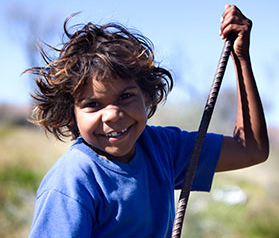 Research has shown that children are better able to learn when they are taught in the language that they best understand. It also shows that understanding something in your first language helps with second-language learning, as well as overall academic achievement in both languages.
Research has shown that children are better able to learn when they are taught in the language that they best understand. It also shows that understanding something in your first language helps with second-language learning, as well as overall academic achievement in both languages.
International and Australian research is now making strong links between recognising and using first language and cultural knowledge, with student identity, wellbeing and education outcomes.
Samantha Disbray is a linguistics researcher at Charles Darwin University and, in a recent article for The Conversation, she wrote about the success of bilingual education in the Northern Territory and the importance of adopting this model more widely.
Yuendumu school
Nancy Oldfield Napurrurla has been a teacher at Yuendumu school for more than 30 years. Over this time, she has introduced children to school routines, literacy and other skills in a language they understand – Warlpiri. Alongside this, they are also taught English literacy with lessons in oral English from another teacher.
In Nancy’s preschool class, the children sing along in Warlpiri to Marlu Witalpa (Little Kangaroo). It seems to be a simple children’s song about a kangaroo looking for its mother, but with its complex expressions and traditional hand signs, it’s also an effective tool for learning.
Teachers at Yuendumu school and other bilingual schools have been working for many years to successfully blend traditional and contemporary knowledge. Their overarching aim is to give young people the skills they need as bicultural adults in the modern world.
Not enough Aboriginal and Torres Strait Islander teachers
Due to changes in funding, support and policy, there are now fewer qualified Aboriginal and Torres Strait Islander teachers in remote Australia than there were in the 1980s.
Many people, like Nancy, were supported by their school and the government to get professional qualifications and have leadership opportunities.
Today, however, these opportunities are rarely available to people in remote communities.
The Northern Territory Education Department is recognising the importance of teaching Aboriginal languages in schools and is developing policy and curriculum to support that.
The most important need, however, is for schools to gain more teachers from their own communities who speak their own languages. As Disbray writes, this is where we need to invest in Aboriginal and Torres Strait Islander education – in teacher education, professional learning and language education.
You can read Disbray’s full article on The Conversation website.


